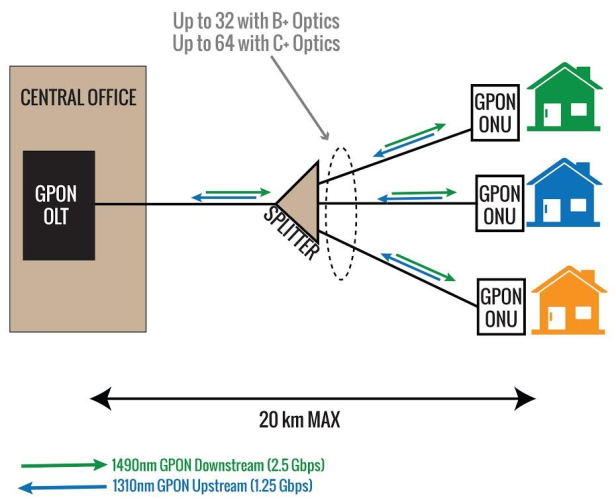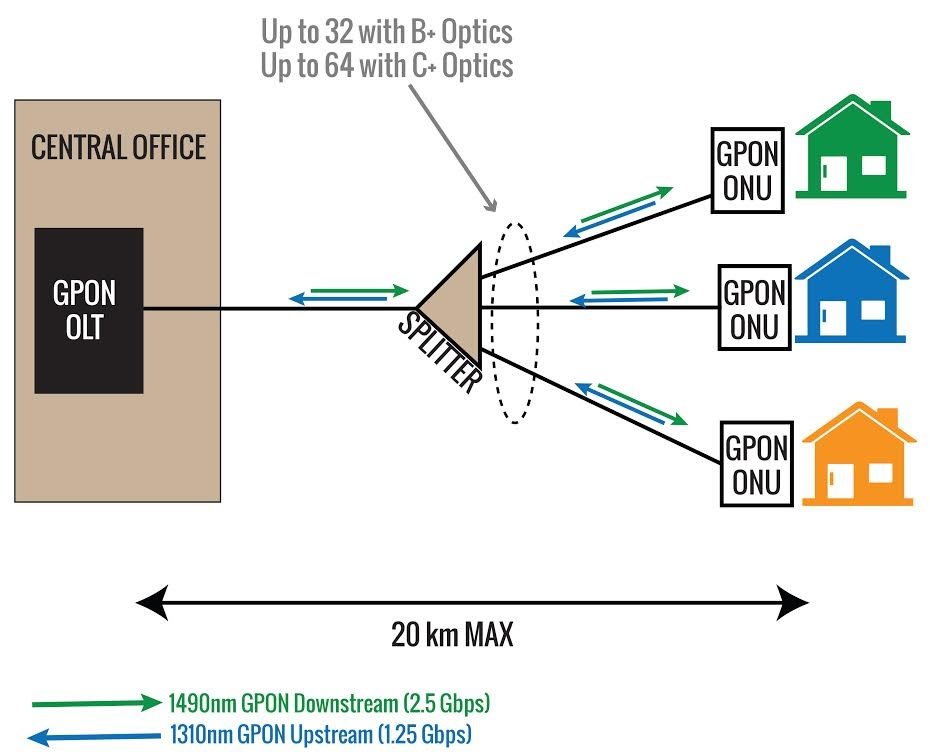
Are GPON Networks Easy To Maintain?
Have you ever wondered if GPON networks are easy to maintain? Well, you're in the right place! In this article, we'll explore the world of GPON networks and discover just how easy they are to maintain. So, let's dive in and find out!
Now, you might be wondering, what exactly is a GPON network? GPON stands for Gigabit Passive Optical Network, and it's a technology that uses fiber optic cables to transmit data at incredibly high speeds. It's used for various applications like internet connectivity, video streaming, and telephone services.
But let's get back to the main question at hand. Are GPON networks easy to maintain? Well, the good news is that they are! GPON networks require minimal maintenance, thanks to their passive nature. This means that once the network is set up, there's very little that needs to be done to keep it running smoothly.
So, if you're interested in learning more about GPON networks and discovering why they're so easy to maintain, keep reading! We're about to uncover all the secrets behind this fascinating technology. Let's go!

Are GPON Networks Easy to Maintain?
GPON (Gigabit Passive Optical Network) networks have become increasingly popular in recent years for their ability to provide high-speed internet access to both residential and business users. However, one common question that arises is whether GPON networks are easy to maintain. In this article, we will delve into the details of GPON network maintenance and explore the various factors that contribute to its ease or complexity.
The Role of OLT (Optical Line Terminal)
The OLT, or Optical Line Terminal, is a critical component of the GPON network infrastructure responsible for aggregating and managing the traffic from multiple ONTs (Optical Network Terminals). In terms of maintenance, the OLT plays a crucial role in ensuring the smooth functioning of the network. Maintenance tasks for the OLT typically include software updates, configuration management, and fault detection. Fortunately, most OLTs come equipped with user-friendly management interfaces and support remote access, making maintenance tasks relatively easy to perform.
Additionally, many OLT vendors provide comprehensive documentation and support resources to assist network administrators in troubleshooting and resolving any issues that may arise. This accessibility to resources and user-friendly interfaces contributes to the ease of maintaining GPON networks, even for individuals without extensive technical expertise.
ONT (Optical Network Terminal) Maintenance
The ONTs, or Optical Network Terminals, are the end-points of the GPON network, connecting individual users to the network. ONTs require minimal maintenance and are designed to be user-friendly. They are typically "plug-and-play" devices that do not require any configuration or setup by the end-user. This simplicity of installation translates to ease of maintenance for network administrators.
In the rare event that an ONT malfunctions, it can be easily replaced or reset, minimizing network downtime. Furthermore, ONTs are designed to be highly reliable and have self-diagnostic capabilities that can help identify and resolve certain issues without manual intervention. Overall, the maintenance of ONTs in GPON networks is straightforward and user-friendly.
Infrastructure and Cable Maintenance
The physical infrastructure and cabling of a GPON network also require maintenance to ensure optimal performance. However, compared to traditional copper-based networks, GPON networks have simpler and more robust cabling requirements. The use of fiber optic cables eliminates concerns such as corrosion and signal degradation over long distances.
Maintenance tasks related to the infrastructure of a GPON network mainly revolve around regular inspections and cleaning of fiber optic connectors to prevent dirt or dust buildup that may affect signal quality. These tasks are relatively simple and can be performed by trained personnel without extensive technical knowledge.
In summary, GPON networks are generally easy to maintain due to several factors such as user-friendly management interfaces, comprehensive support resources, and robust infrastructure design. The OLTs and ONTs, the key components of the network, require minimal configuration and are designed to be reliable and easily replaceable. While some maintenance tasks may be required for the network infrastructure and cables, they are relatively straightforward and can be performed by trained personnel. GPON networks offer a cost-effective and efficient solution for high-speed internet access, and their ease of maintenance contributes to their popularity in the telecommunications industry.
Benefits of Maintaining GPON Networks Efficiently
Efficient maintenance of GPON networks brings several benefits that make them an attractive choice for internet service providers and end-users alike. Let's explore these benefits:
1. Reliability and High Availability
Efficient maintenance ensures that GPON networks remain reliable and highly available. Regular inspections and proactive measures help identify and resolve issues before they can lead to network downtime. This reliability is essential for businesses and individuals who depend on a stable internet connection for their operations or daily tasks.
2. Cost Savings
Proper maintenance leads to cost savings in the long run. By identifying and resolving issues promptly, service providers can avoid expensive network outages and minimize downtime. Effective maintenance practices also contribute to the longevity of network equipment and reduce the need for frequent replacements.
3. Enhanced Performance
Maintaining GPON networks ensures optimal performance by identifying and resolving any bottlenecks or signal degradation issues. Regular inspections of infrastructure components such as fiber optic connectors can prevent performance degradation caused by dirt or dust buildup. This enhanced performance translates to faster internet speeds and improved user experience.
4. Optimized Bandwidth Allocation
Efficient maintenance allows for better bandwidth allocation across the network. Through monitoring and analysis, network administrators can identify areas with high traffic demand and adjust bandwidth allocation accordingly. This optimization ensures fair and consistent internet speeds for all users.
5. Improved Customer Satisfaction
Well-maintained GPON networks lead to higher customer satisfaction. Reliable internet access and fast speeds are essential for both residential and business users. Efficient maintenance practices contribute to a seamless and uninterrupted browsing experience, resulting in happier customers and positive reviews.
6. Scalability and Future-Proofing
Effective maintenance of GPON networks facilitates scalability and future-proofing. Regular inspections and upgrades ensure that the network can handle increasing bandwidth demands and evolving technologies. This scalability is crucial in today's rapidly changing digital landscape, accommodating the growing needs of users and businesses.
In conclusion, efficient maintenance of GPON networks brings numerous benefits, including reliability, cost savings, enhanced performance, optimized bandwidth allocation, improved customer satisfaction, scalability, and future-proofing. By adopting proactive maintenance practices, service providers can ensure a stable and efficient network that meets the demands of modern users and businesses.
Key Takeaways: Are GPON networks easy to maintain?
- GPON networks are relatively easy to maintain because of their passive infrastructure.
- Maintenance tasks mainly involve checking the physical connections and ensuring they are working properly.
- Software updates and monitoring can be done remotely, reducing the need for on-site visits.
- GPON networks have proven to be reliable and stable, minimizing the need for frequent troubleshooting.
- Training and support are available for technicians to troubleshoot any issues that may arise.
Frequently Asked Questions
Are you curious about the maintenance of GPON networks? Check out these commonly-asked questions to learn more about the ease of maintaining GPON networks.
1. How often do GPON networks require maintenance?
GPON networks are designed to be low-maintenance, requiring minimal attention once they are properly installed. Routine maintenance is generally performed in longer intervals, ranging from several months to a year, depending on the network's size and usage. This means less time and effort spent on regular upkeep compared to traditional networks.
However, it's important to note that any network can experience occasional issues or require troubleshooting. In these cases, network administrators or technicians will need to address and resolve the specific problem. Nonetheless, overall, GPON networks are known to be reliable and hassle-free.
2. Can GPON network maintenance be performed in-house or is professional assistance required?
GPON network maintenance can often be conducted in-house by network administrators or IT staff. Many of the routine maintenance tasks, such as monitoring network performance, checking for hardware or software updates, and conducting periodic inspections, can be handled by trained personnel within the organization.
However, in some instances, specialized technical expertise may be required. For complex issues or system upgrades, it may be necessary to seek assistance from professionals who have in-depth knowledge and experience with GPON networks. By partnering with experts, organizations can ensure that their GPON networks are maintained optimally and that any potential problems are effectively addressed.
3. How easy is it to troubleshoot issues in a GPON network?
Troubleshooting issues in a GPON network is typically straightforward due to the network's architecture and advanced monitoring capabilities. GPON networks are designed with built-in diagnostic tools that can help identify problems, pinpoint their location, and facilitate faster resolution.
In many cases, network administrators can rely on specialized software and management systems to monitor the network's performance in real-time, making it easier to detect and address any anomalies. Additionally, GPON networks often provide comprehensive logs and error reports, which can assist in troubleshooting by providing valuable insights into network malfunctions or performance degradation.
4. Are there any specific skills or knowledge required to maintain a GPON network?
Maintaining a GPON network requires a certain level of technical expertise and familiarity with network management principles. Network administrators or IT staff responsible for GPON network maintenance should possess a solid understanding of networking fundamentals, such as Ethernet technology, IP addressing, and network protocols.
Furthermore, familiarity with GPON-specific equipment, such as Optical Line Terminals (OLTs) and Optical Network Units (ONUs), as well as configuration and management software, is essential. Regular training and certifications can help ensure that personnel are up-to-date with the latest industry practices and solutions, making GPON network maintenance more efficient and effective.
5. What are some common maintenance tasks for GPON networks?
Common maintenance tasks for GPON networks include monitoring network performance, checking for hardware or software upgrades, ensuring proper power and environmental conditions, and periodically inspecting and cleaning fiber optic cables and connectors.
In addition, managing network security, analyzing traffic patterns, and resolving any connectivity issues are also important aspects of maintaining a GPON network. By proactively addressing these tasks and promptly responding to network anomalies, organizations can ensure that their GPON networks operate smoothly and deliver the desired performance to end-users.
Summary
GPON networks are a type of internet connection that use fiber optic cables to deliver fast and reliable internet. These networks are easy to maintain because they require less maintenance compared to other types of internet connections. GPON networks also have fewer components than traditional networks, which means less time and effort is needed for repairs. Additionally, GPON networks have a longer lifespan and are less likely to experience downtime or service disruptions. Overall, GPON networks offer a simple and hassle-free solution for internet connectivity.
However, it's important to note that regular maintenance is still necessary to ensure optimal performance. This includes monitoring the network, conducting routine checks, and addressing any issues promptly. By following these maintenance practices, GPON networks can continue to provide reliable internet access for both residential and commercial users.
Recent Posts
- How Does GPON Improve Network Efficiency?
- What Are The Advantages Of GPON?
- What Are The Benefits Of IT Outsourcing?
- What's The Deal With Ransomware Attacks?
- Are GPON Providers Widely Available?
- What's GPON's Impact On Bandwidth?
- Why Is Multi-Factor Authentication Important?
- How To Ensure Data Privacy Compliance?
 Blogs
Blogs Infographics
Infographics Videos
Videos Podcasts
Podcasts Case Studies
Case Studies Call For Quote
Call For Quote